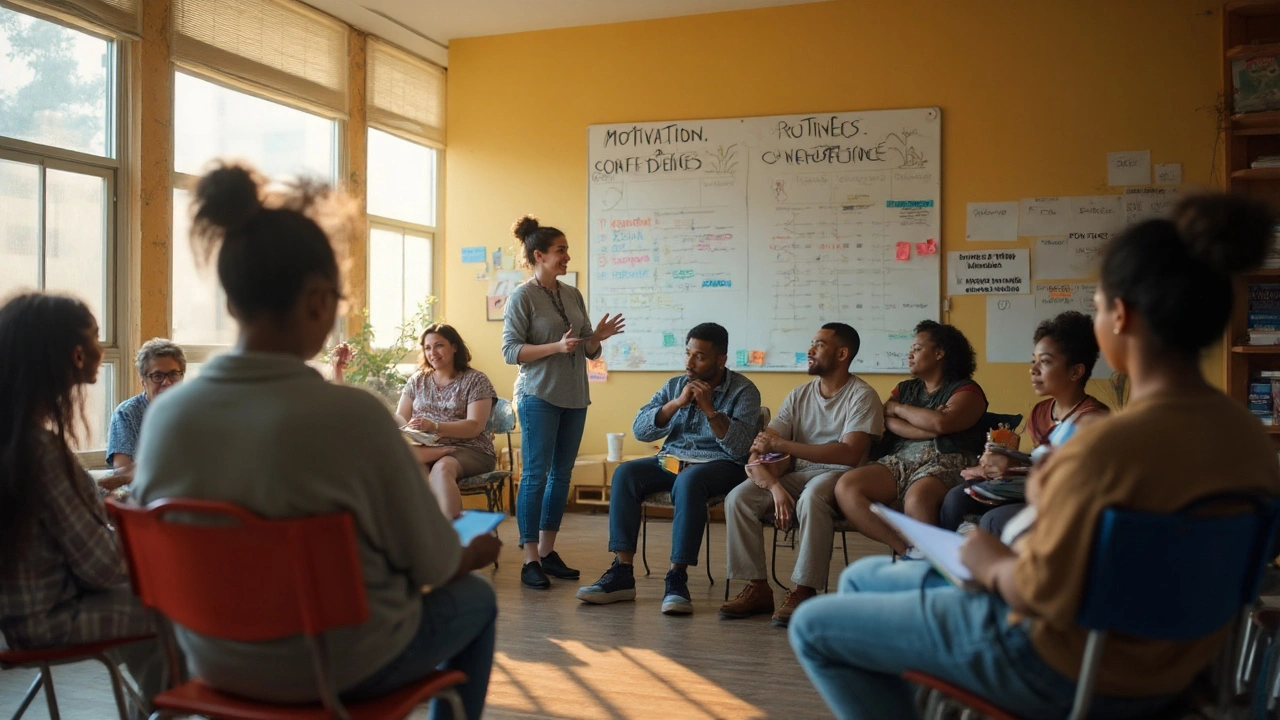

If you or your child have ADHD, you’ve probably tried meds, coaching, or alone‑time strategies. Many people forget one powerful tool: a group of peers who get it. Group therapy brings together folks with similar challenges, so you can learn, share, and feel less alone. It’s not a sitcom – it’s a structured, therapist‑led setting where real progress happens.
First off, a group isn’t a free‑for‑all. A licensed counselor guides the session, keeps talk on track, and makes sure everyone gets a turn. The therapist also teaches evidence‑based tricks for focus, impulse control, and emotional regulation. Those tricks get reinforced when you see others try them out and succeed.
Sessions usually run 60‑90 minutes once or twice a week. You’ll start with a brief check‑in – everyone shares one win or one struggle from the past week. That opens the floor for the therapist’s mini‑lesson, which might cover time‑blocking, sensory breaks, or dealing with guilt.
After the lesson, the group breaks into small breakout circles. This is where you practice the skill, ask questions, and get feedback from people who truly understand. The therapist circulates, adds tips, and helps keep the conversation productive.
Most groups end with a concrete plan: a “homework” task like using a timer for a study block or trying a new calming technique before school. You’re accountable to the group, so the odds of actually doing the task go up.
Peer validation. Hearing others say “I’m the same” cuts down on shame and builds confidence.
Practical ideas. You get a menu of strategies that worked for someone else, saving you trial‑and‑error time.
Accountability. Knowing you’ll report back to the group makes you more likely to stick with a habit.
Social skills practice. You learn to listen, give feedback, and negotiate – all skills that ADHD can make tricky.
Reduced stress. The group environment normalizes challenges, which lowers anxiety and improves mood.
These benefits stack up, often making group therapy a cost‑effective complement to medication or one‑on‑one counseling.
Show up consistently. Skipping sessions breaks the momentum and makes it harder to build trust.
Be honest. Share both successes and setbacks. The more real you are, the more useful the feedback.
Take notes. Jot down tips, resources, or homework assignments. A quick reference helps you apply what you learn.
Practice outside the room. Use the strategies during daily tasks, then report back. Real‑world practice is where change sticks.
Respect the group rules. Turn off distractions, listen actively, and give others space to speak. The therapist sets the vibe; you keep it productive.
If you’re a parent, consider a separate parent‑focused group. It gives you a chance to talk about advocacy, school coordination, and self‑care without pulling your child into the conversation.
Finding the right group might take a few tries. Look for a therapist who specializes in ADHD, check reviews, and ask about the group’s size and age range. A good fit feels supportive, not judgmental.
Bottom line: group therapy isn’t a magic fix, but it’s a practical, community‑driven way to boost focus, manage impulses, and feel less isolated. Give it a shot, bring an open mind, and watch how shared experience can turn challenges into manageable steps.

See how ADHD support groups boost motivation, routines, and confidence. Evidence-backed benefits, what to expect, how to pick a group, and UK-friendly tips.